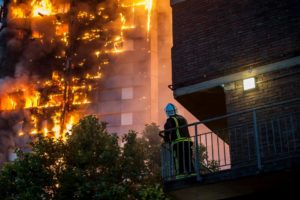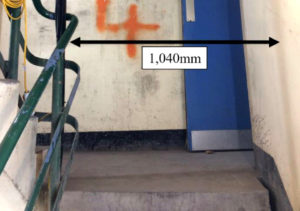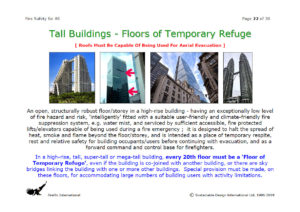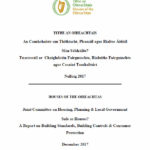2024-03-01: Too many strategic mistakes are being made, and too much uninformed ‘group-think’ is evident, in the – NOW – frantic human scramble to head off Climate Disruption … and attain Sustainable Human & Social Development … an intricate, open, dynamic and continuously evolving concept which is still not properly understood.
In a Split Human Personality which is clearly observed amid today’s geopolitical turmoil … much of one ‘personality’ is involved in this positive, yet arduous Ecological Rescue Attempt … while the other ‘personality’ stubbornly ignores the enormous negative impacts on that Task by: (i) the #USA #UK #NATO Proxy War in #Ukraine ; (ii) the ongoing Extermination of the Palestinian People & Culture in Illegally Occupied Territories by #Zionists intent on establishing a Greater Israel ; and (iii) the growing Hostility of the Global South towards the #West caused by (i) and (ii), just when global unified and concerted action on climate disruption is urgently required.
.
Uninformed Group-Think …
Sustainability Impact Assessment of Electric Vehicles
In June 2023, Rowan Atkinson (aka Mr.Bean … and surprise surprise, he has a degree in electrical and electronic engineering with a masters in control systems) wrote a serious Opinion Piece in England’s Guardian Newspaper/Website/Smart Phone App: I Love Electric Vehicles – and Was An Early Adopter. But Increasingly I Feel Duped … https://www.theguardian.com/commentisfree/2023/jun/03/electric-vehicles-early-adopter-petrol-car-ev-environment-rowan-atkinson
Rowan’s well-reasoned conclusion … “Sadly, keeping your old petrol car may be better than buying an Electric Vehicle (#EV). There are sound environmental reasons not to jump just yet.”
EV’s should properly be evaluated using Full Life Cycle Sustainability Impact Assessment … not just checking one, very beneficial but isolated, type of performance, i.e. zero exhaust emissions.
.

Without even mentioning the #FireSafety Issues associated with Lithium-Ion Batteries in e-Cars (and e-Scooters, e-Bikes, e-Wheelchairs, etc.) … Rowan was / is correct … yet he was swamped with a ‘tonne of abuse’ for daring to voice an unfashionable opinion … to question the current majoritarian group-think on EV’s.
.
Mining Cobalt for Lithium-Ion Batteries – Serious Rights Violations in DRC
Back in November 2017, Amnesty International (#AI) published a Report: TIME TO RECHARGE – Corporate Action and Inaction To Tackle Abuses In The Cobalt Supply Chain … https://www.amnesty.org/en/documents/afr62/7395/2017/en/
The Report’s Executive Summary begins …
‘ Our world is increasingly powered by Lithium-Ion Batteries, ranging from the ones found in everyday mobile technologies, such as smartphones and laptop computers, to those in electric vehicles. There is also a growing interest in using super-sized rechargeable batteries to help store electricity generated from solar and wind sources and deliver it to consumers more efficiently. These technologies are attractive because of their perceived sustainability. But as their use becomes more and more widespread, in what some are calling the ‘clean energy revolution’, it is necessary to ask whether the energy powering this revolution is as ‘clean’ as it is claimed to be.
Cobalt is an element critical for powering the clean energy revolution. More than 50% of the world’s cobalt supply originates in the Democratic Republic of Congo (#DRC).’
The 2017 Report builds on an earlier report: ‘This is What We Die For’, first published by Amnesty International and #Afrewatch in 2016, which showed how #Cobalt mined by young children and adults – in very hazardous conditions and in serious violation of their Human Rights – entered the supply chains of many of the world’s biggest brands. The new report assesses the policies and practices of 29 companies and how much their cobalt-sourcing practices have improved since then.
Did anybody really care that these Human Rights Violations were taking place in #Africa ? NO.
Was the strength and pace of mushrooming world Lithium-Ion Battery production in any way affected by the 2017 AI Report ?? NO.
.
Sustainability Impact Assessment (SIA)
Important Policy and Decision Making Mistakes can be attributed to the lack of rigorous Sustainability Impact Assessment. ( Environmental Impact Assessment ignores the other important aspects of Sustainable Development … and therefore is limited, inadequate, and out-of-date.) Instead, #SIA should be deeply embedded in both processes as a matter of regular routine …
Sustainability Impact Assessment: A continual evaluation and optimization process – informing initial decision-making, design, shaping activity / product / service realization, useful life, and termination or final disposal – of the interrelated positive and negative social, environmental, economic, institutional, political and legal impacts on balanced and equitable implementation of Sustainable Human & Social Development.
.
Signs & Symptoms
Environmental Signs of Planet Breakdown include: Climate Disruption, Biodiversity Loss, Ocean Acidification, Coral Reef Destruction, Extreme Heatwaves and Droughts, Intense Wildfires, Polar Ice Cap Retreat and Collapse, Amazon Forest Dieback, etc., etc.
The example of Electric Vehicles above is a small indication that something more serious is wrong with Human Behaviour generally. It is a Human Symptom … one which opens up the potential of exploring a different approach to solving the World’s Ecological Overshoot.
2023 Ecology & Environmental Science Paper
World Scientists’ Warning: The Behavioural Crisis Driving Ecological Overshoot
[ Download PDF File, 595 Kb ]
This very interesting Paper points to the start, and elaborates a beginning – not the end – of an innovative Human Behaviour Research Path … with the practical aim of effectively heading off Climate Disruption and attaining Sustainable Human and Social Development.
Scientific Paper’s Abstract
Previously, Anthropogenic Ecological Overshoot has been identified as a fundamental cause of the myriad signs we see around the globe today from biodiversity loss and ocean acidification to the disturbing rise in novel entities and climate disruption. In the present paper, we have examined this more deeply, and explore the human behavioural drivers of overshoot, providing evidence that overshoot is itself a symptom of a deeper, more subversive modern crisis of human behaviour. We work to name and frame this crisis as the Human Behavioural Crisis and propose the crisis be recognised globally as a critical intervention point for tackling ecological overshoot. We demonstrate how current interventions are largely physical, resource intensive, slow-moving and focused on addressing the signs of ecological overshoot (such as climate disruption) rather than the real cause (maladaptive behaviours). We argue that even in the best-case scenarios, sign level interventions are unlikely to avoid catastrophe or achieve more than ephemeral progress.
We explore three Drivers of the Behavioural Crisis in depth: (a) Economic Growth ; (b) Marketing & Advertising ; and (c) Pro-Natalism. These three drivers directly impact the three Levers of Ecological Overshoot: 1.Over Consumption ; 2.Excessive Waste ; and 3.Population Growth. We demonstrate how the maladaptive behaviours of overshoot stemming from these three drivers have been catalysed and perpetuated by the intentional exploitation of previously adaptive human impulses.
In the final sections of this paper, we propose an Interdisciplinary Emergency Response to the behavioural crisis by, amongst other things, the shifting of social norms relating to reproduction, consumption and waste. We seek to highlight a critical disconnect that is an ongoing societal gulf in communication between those that know, such as scientists working within limits to growth … and those members of the citizenry, largely influenced by social scientists and industry, that must act.
Paper Conclusion
In summary, the evidence indicates that Anthropogenic Ecological Overshoot stems from a crisis of maladaptive human behaviours. While the behaviours generating overshoot were once adaptive for Homo Sapiens, they have been distorted and extended to the point where they now threaten the fabric of complex life on Earth. Simply, we are trapped in a system built to encourage growth and appetites that will end us.
The current emphasis for overshoot intervention is Resource Intensive (e.g. the global transition to renewable energy), and Single Environmental Sign Focused. Indeed, most mainstream attention and investment is directed towards mitigating and adapting to climate disruption. Even if this narrow intervention is successful, it will not resolve the meta-crisis of ecological overshoot. In fact, with many of the current resource-intensive interventions, it is likely to make matters worse. Psychological interventions are likely to prove far less resource-intensive and more effective than physical ones.
- We call for increased attention on the behavioural crisis as a critical intervention point for addressing overshoot and its myriad signs ;
- We advocate increased interdisciplinary collaboration between the social and behavioural science theorists and practitioners, advised by scientists working on limits to growth and planetary boundaries ;
- We call for additional research to develop a full understanding of the many dimensions of the behavioural crisis (including the overwhelming influence of power structures) and how we can best address it ;
- We call for an emergency, concerted, multidisciplinary effort to target the populations and value levers most likely to produce rapid global adoption of new consumption, reproduction and waste norms congruent with the survival of complex life on Earth ;
- We call for increased interdisciplinary work to be carried out in directing, understanding and policing widespread behaviour manipulation.
The Clock Is Ticking not only because the health of the natural systems upon which we are utterly dependent is deteriorating, but also because broad sweep interventions are only possible when a society holds together and is capable of coherent action. As the effects of overshoot worsen, the likelihood of societal breakdown increases. We still have an opportunity to be proactive and utilise the intact systems we have in place to deliver a framework for shifting social norms and other necessities for addressing the behavioural crisis. However, the day may come when societal breakdown will make intervention impossible, locking the planet into an unguided recovery that may salvage much of Nature but be inhospitable to human life.
.
Are We Trapped in a System built to encourage growth and appetites that will end us ?
OR … Are Humans a Virus intent on devouring the last of this Planet’s Limited Resources (as postulated by Agent Smith) ??
What do YOU think ?
.
.
END
#ProxyWar #GazaGhetto #Genocide #IndependentPalestine #GreaterIsrael #GlobalSouth #GlobalNorth #FeuxDeForêt #SustainabilityImpactAssessment #ElectricVehicles #eCars #eScooters #eWheelchairs #ClimateDisruption #ClimateSynergies #ClimateTippingPoints #ExterminationOfPalestinians #RowanAtkinson #MrBean #LithiumIonBatteries #England #Migration #GuardianNewspaper #EnvironmentalSigns #HumanSymptoms #Anthropogenic #EcologicalOvershoot #HumanBehaviouralCrisis #InterdisciplinaryEmergencyResponse #ResourceIntensive #SingleEnvironmentalSignFocused #BiodiversityLoss #OceanAcidification #CoralReefDestruction #ExtremeHeatwaves #ExtremeDroughts #IntenseWildfires #PolarIceCapRetreat #AmazonForestDieback #Bushfires #IncendiBoschivi #IncendiosForestales #OrmanYangınları #IncêndiosFlorestais #AmnestyInternational #DriversOfBehaviouralCrisis #EconomicGrowth #Marketing #Advertising #ProNatalism #LeversOfEcologicalOvershoot #OverConsumption #ExcessiveWaste #PopulationGrowth #ClockIsTicking





























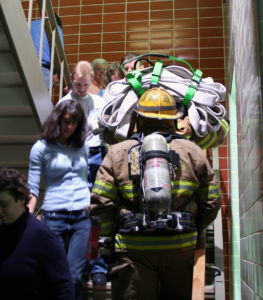
 … which also covers
… which also covers 